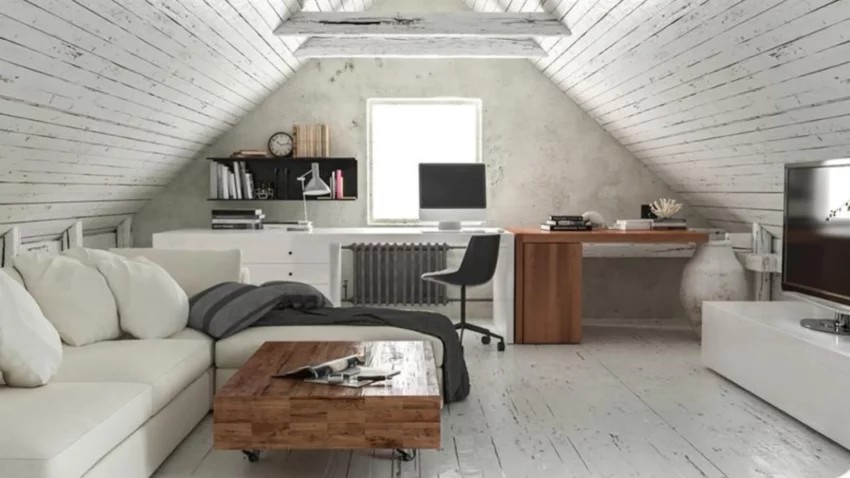Are you thinking of doing home renovation projects to increase the value and usefulness of your property? If so, have you considered remodeling your attic? In many houses, the attic is an underutilized room that may be converted into a useful living space with proper design and execution. In this post, we will look at the benefits of attic remodeling and give you information to help you decide whether your attic is worth remodeling.
1. Introduction
The attic, which is often used for storage, has the potential to be converted into a useful and aesthetically beautiful living area. Remodeling your attic may increase the square footage of your house without requiring an expensive extension. However, before commencing an attic remodeling project, it is essential to assess many criteria to decide whether the investment is worthwhile.
2. Assessing the Condition of Your Attic
The first step in assessing whether or not your attic is worth remodeling is to evaluate its present state. Inspect the structural soundness of the roof, walls, and flooring. Determine if there is any evidence of damage, such as leaks, rodents, or mold. Examine the accessibility and ceiling height to verify that it fulfills the bare minimum for comfortable living.
3. Determining Your Goals and Needs
Define your aims and requirements for the remodeled attic. Do you want to add a bedroom, a home office, or a leisure space to your house? Understanding your individual needs can help you steer the design process and make educated judgments about layout, features, and functions.
4. Evaluating Structural Feasibility
To determine the structural viability of remodeling your attic, consult with a competent builder or architect. They will evaluate the floor’s load-bearing capability, decide if changes are required to accommodate the new planned use and assure compliance with building standards and regulations.
5. Planning and Designing Your Attic Remodel
Make a detailed strategy and design for your attic makeover. Take into account the layout, room partitions, and traffic flow. Make the most use of available space and experiment with new storage ideas. Include aesthetic aspects that complement your unique style while keeping a consistent design throughout.
6. Obtaining Necessary Permits and Permissions
Before beginning any remodeling project, check with your local authorities to ensure that you have all of the essential licenses and licenses. Building laws, fire safety standards, and zoning restrictions must all be followed to assure the remodel’s safety and legality.
7. Hiring Professionals or DIY Approach
Determine if you will engage specialists or do the remodeling job on your own. While a do-it-yourself technique may save money, it does need a certain degree of knowledge and may take longer to accomplish. Hiring pros assures great workmanship but comes at a cost.
8. Managing Costs and Budgeting
Establish a reasonable budget for your attic remodeling job. Consider the costs of supplies, labor, permits, and any unanticipated charges. Gather various estimates from contractors to compare pricing and choose the one that best fits your financial limits.
9. Choosing the Right Materials and Finishes
Choosing the right materials and finishes is essential for both aesthetics and practicality. Consider things like durability, insulation, and maintenance needs. Choose materials that suit your home’s overall design and contribute to energy efficiency.
10. Optimizing Space and Storage Solutions
Attics often feature one-of-a-kind areas with slanted ceilings and unusual forms. Investigate inventive storage options to maximize useable space while keeping the surroundings clutter-free. Custom cabinets, shelving, and built-in furniture may improve utility and organization.
11. Installing Insulation and Ventilation
Proper insulation and ventilation are vital for keeping an attic area pleasant and energy-efficient. Make sure there is enough insulation to prevent heat loss or gain. Install adequate ventilation systems to control temperature, minimize humidity, and avoid moisture-related problems.
12. Incorporating Natural Light
Integrating natural light into your attic redesign may significantly improve its attractiveness and create a welcoming environment. Install skylights, dormer windows, or light tubes to let in more natural light. Furthermore, carefully positioned windows may provide both picturesque vistas and ventilation.
13. Enhancing Energy Efficiency
Make your attic remodel more energy-efficient by incorporating energy-saving features. Use LED lighting fixtures, energy-efficient appliances, and smart home systems to reduce energy consumption. Proper insulation and efficient HVAC systems contribute to long-term energy savings.
14. Ensuring Safety and Compliance
Prioritize safety during your attic remodeling project. Install smoke detectors, carbon monoxide detectors, and fire extinguishers to ensure the well-being of the occupants. Adhere to safety regulations for electrical wiring, stairs, and handrails to prevent accidents.
15. Conclusion
If you have assessed the state of your attic, established your objectives, and assessed the feasibility, remodeling it might be a rewarding endeavor. You may increase the value of your house and generate more living space for your family by converting an underutilized room into a functioning area.





